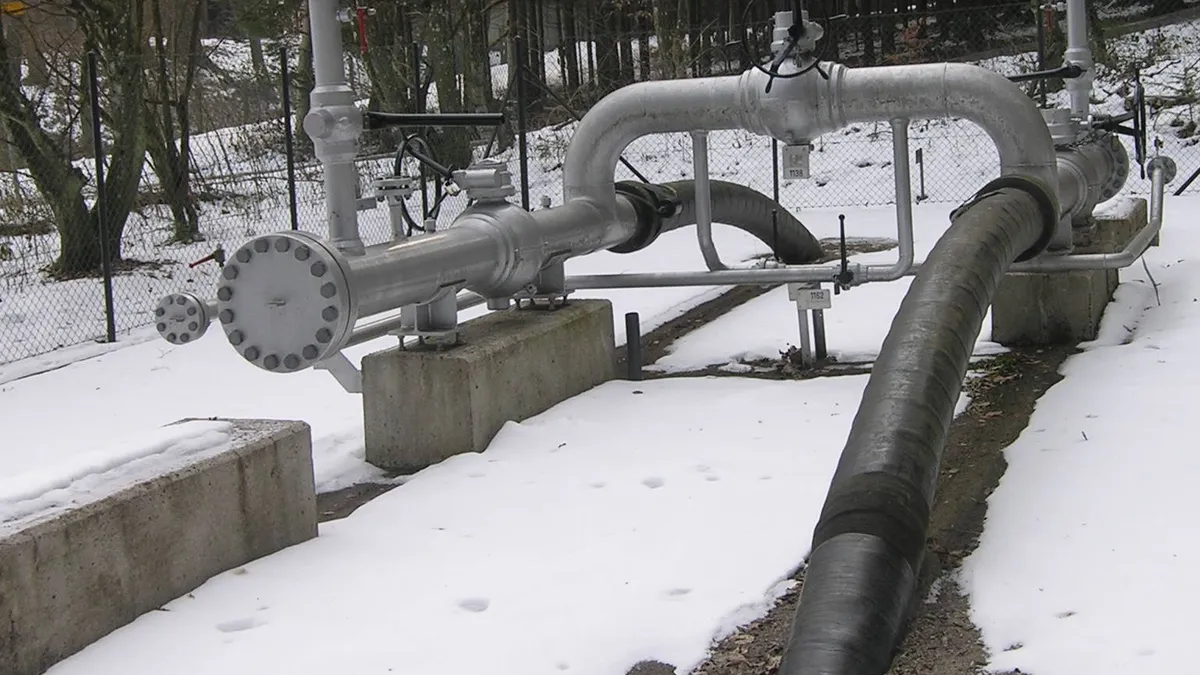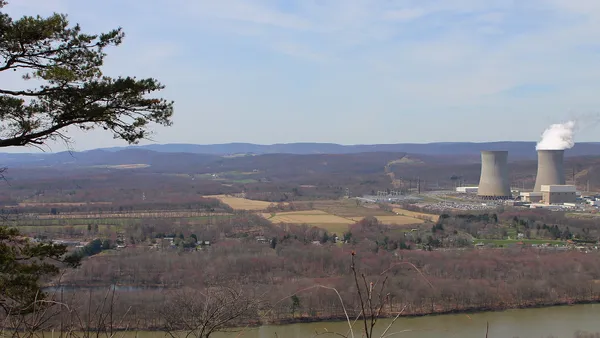Dive Brief:
-
Increasing liquefied natural gas (LNG) exports are contributing to rising U.S. natural gas prices by decreasing domestic supply, which could have a major effect on New England’s energy markets this winter, according to FERC staff.
-
Average forward natural gas prices across U.S. trading hubs for the upcoming winter have more than doubled from a year ago, to $5.63 per million British thermal units (MMBtu), with prices more than quadrupling, to $18.18/MMbtu, at the Algonquin hub near Boston, FERC staff said Thursday in its annual winter energy market and reliability assessment.
-
Although regions across the country have reserve margins of at least 26%, FERC Chairman Richard Glick warned that that metric of adequate power supply may no longer be valid in the face of extreme weather, which can knock large numbers of power plants offline.
Dive Insight:
With natural gas prices climbing across the United States, during FERC's monthly meeting, Glick urged generators with capacity obligations to arrange fuel contracts and start the winter with sufficient fuel supplies.
All planning regions across the U.S. expect to have more than enough generation capacity to meet their needs, but fuel supplies could be a problem, according to FERC staff.
"Fuel availability remains critical to reliability of the bulk power system this winter," a FERC staffer said during the commission’s monthly meeting. "Regions with high levels of natural gas generation may experience scarcity of natural gas supplies, especially in the Northeast."
FERC staff said natural gas demand is expected to average 111 billion cubic feet a day (Bcfd) this winter, up 2.5% from the same period last winter. The increase is mainly driven by a 21% jump in LNG gross exports, they said.
The warning about high natural gas prices this winter comes as the Industrial Energy Consumers of America, a trade group for manufacturers, is urging the Department of Energy to limit LNG exports to keep gas prices in check this winter.
During the meeting, Glick asked FERC staff members to what extent LNG exports were affecting domestic natural gas prices.
Expectations for rising LNG exports are already reflected in forward natural gas prices, they said. Also, the price risk from selling LNG to other countries is limited to how much the U.S. can export, according to staff. The U.S. currently can export 10.8 Bcfd, but with two LNG facilities preparing to come online, exports could reach 12.3 Bcfd this winter, staff said at the meeting.
In New England, soaring natural gas prices are partly driven by the region’s limited natural gas pipeline capacity and competition for LNG cargoes in light of rising worldwide energy prices, FERC staff said.
"New England's dependence on natural gas and rising global LNG demand are expected to have a significant impact on New England natural gas markets" staff said.
Extremely cold temperatures in New England present challenges for natural gas supply, electricity markets and electric reliability, according to FERC staff.
Although the National Oceanic and Atmospheric Administration is forecasting a warmer-than-normal winter for most of the U.S., and reserve margins appear adequate, cold snaps can affect power supply, Glick said.
"The reality is that reserve margins aren't necessarily guarantors of reliable operation," Glick said, pointing to mid-February blackouts in Texas and other states.
Glick said he is bothered that generators in ISO New England (ISO-NE) get capacity payments but don’t necessarily take steps to make sure they have enough fuel for the coldest winter days, even under the grid operator's pay-for-performance capacity framework.
Local natural gas utilities typically contract for firm pipeline deliveries, but natural gas power plants in New England generally don’t use firm contacts, which can limit their deliveries in the winter, staff said.
FERC’s report indicates the U.S. is facing gas scarcity, according to Commissioner James Danly. At the same time, FERC has delayed approving natural gas projects and injected uncertainty into the natural gas sector, he said.
"It seems to be fashionable to ignore what you would call the reliability consequences of the increased penetration of intermittents into the electric system, but those consequences are real, and when paired with gas scarcity, it really does not bode well for the stability of the electric system," Danly said.
Glick blamed the lack of New England pipeline development on generators not entering into firm gas contracts. FERC is responding to court decisions requiring the agency to bolster its reviews of how proposed gas infrastructure affects greenhouse gas emissions and environmental justice communities, but Glick dismissed the idea that that was the impediment to pipeline development.
ISO-NE is in regular contact with generators and pipeline operators throughout the year, and particularly in the winter, Ellen Foley, a spokesperson for the grid operator, said in an email.
To identify possible energy shortfalls ahead of time, three years ago ISO-NE started publishing a 21-day forecast looking at system conditions, forecasted weather, load, generators’ reports of stored-fuel inventories and emissions limitations, and status of fuel delivery systems, according to Foley.














